|
FAQs about Nudibranch Identification 7
Related Articles: Nudibranchs, Sea Slugs,
Related FAQs: Nudi ID 1, Nudi ID 2,
Nudi ID 3, Nudibranch ID 4, Nudibranch ID 5, Nudibranch ID 6, Nudi ID 8, Nudi ID 9,
Nudi ID
10, Nudi ID 11, & Nudibranchs 1, Nudibranchs 2, Berghia Nudibranchs, Nudibranch Behavior, Nudibranch Compatibility, Nudibranch Selection, Nudibranch Systems, Nudibranch Feeding, Nudibranch Disease, Nudibranch Reproduction, & Sea Slugs, Marine Snails 1,
Marine Snails 2,
Marine Snails 3,
|
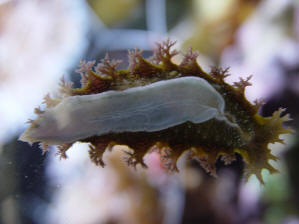
|
|
Yes, and ID question.... sorry
3/27/13
You California guys have much info on this????
Adam
<What is that? Renilla? BobF>
|
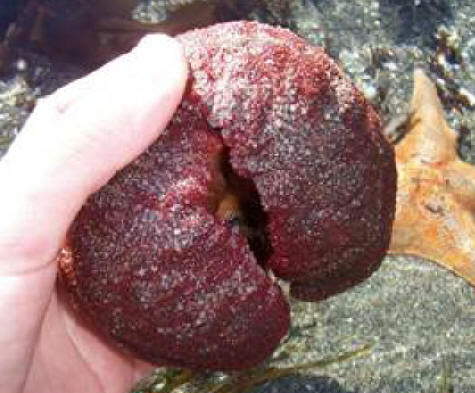 |
Identification attempt for 3/27/13 creature
*Yes, and ID question.... sorry 3/27/13*
You California guys have much info on this????
Adam
<What is that? Renilla? BobF>
hello! I thought I might offer a guess as to what this creature might be. My
guess is that this is a Chiton, maybe
Cryptochiton stelleri; the colours and shape seem to match.
Emilie
<<Ah yes Emilie. Please see LynnZ's input below. BobF>>
Hey Bob! I think the critter in question is Cryptochiton stelleri, aka
the Gumboot Chiton. Here's a link with a photo/info:
http://seanet.stanford.edu/OtherMolluscs/#Cryptochiton_stelleri .
Hope that helps!
Take care,
-Lynn |
|
Nudibranch ID 1/11/13
Can you ID the attached pic of a Nudibranch? I believe it is the type that
eats Zoanthids, but I see no damage to any of my colonies and I found this
guy in the sump. Thanks!
<Mmm, yes... appears to be an Aeolid... do place the string:
"Aeolid predators of Zoanthids"
in your search tool and read re. Bob Fenner>
|
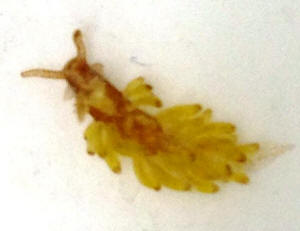 cropped and enhanced
cropped and enhanced |
Re: Nudibranch ID
1/11/13
Thanks!!!
<Welcome Van. BobF> |
|
Hermit Crab and Nudibranch: Clibanarius cruentatus and
Aeolidiella alba, IDs, comp. – 11/13/12
> Hi,
> <Hello, Lynn here this morning.>
> I recently brought 2 'Mexican algae hermit crabs' that were supposed
to be reef safe, one of them I cannot identify the species... Any idea?
> <Yep, it appears to be Clibanarius cruentatus, aka the “Spotted Black
Hermit crab”, which is in the family Diogenidae (left-handed hermits).
Whether this species is completely “reef-safe” depends on your
definition of the term. Hermits are typically omnivorous but can have
tendencies toward being either more herbivorous or carnivorous.
What's important is that if/when their preferred food dwindles, and they
get hungry enough, they will likely “sample” whatever else is available.
Bottom line: keep an eye on any and all hermits - even those labeled as
reef-safe, algae-eaters, or herbivores. That is, watch what they
tend to eat, make sure they have enough, and monitor for any damage to
livestock. It’s a good idea to supplement their food with meaty
bits of marine origin, sinking pellets, and/or bits of Nori (dried
seaweed sheets). Please see the following link for more
information and photos regarding Clibanarius cruentatus:
http://www.wildsingapore.com/wildfacts/crustacea/othercrust/anomura/hermit/spottedblack.htm
> More information on hermits here:
http://www.wetwebmedia.com/marine/inverts/arthropoda/crabs/hermitcrabs.htm?h=
>
> Also found a Nudibranch on my live rock which I cannot identify.
He doesn't seem to have touched my corals.
> <That’s good to “hear”/read but do keep an eye on them as sometimes
the damage isn't immediately apparent. You have what appears to be a
species known as Aeolidiella alba (family Aeolidiidae). If you can get a
close look at the base of the rhinophores (the knobby-looking appendages
just behind the head), you should see either a fine reddish line, ring,
or splotch (see photos at links below for comparison). Also reported, is
this species’ odd appearance during locomotion as it “waves” or “jerks”
its cerata (appendages along the back) back and forth.
Unfortunately, I wasn’t able to locate any information regarding the
animal’s diet, but rest assured, it’s a carnivorous predator. These
Nudibranchs tend to hitchhike on or near their food source so if your
individual arrived on a recent coral addition, I’d remove it asap, and
keep an eye out for others.
> Please see the following links for photos and more information:
http://www.seaslugforum.net/showall/aeolalba
>
http://seaslugsofhawaii.com/species/Aeolidiella-alba-a.html
> More information on Aeolids here:
http://www.wetwebmedia.com/MolluscPIX/Gastropods/Opistobranchs%20Sea%20Slugs/Nudibranchs/nudibran5.htm?h=
> Take care,
> -Lynn Z>
|
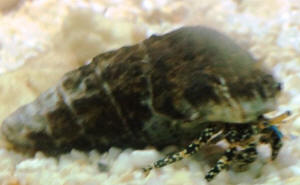
%20Nudi%20ID.jpeg) |
|
Re: Hermit Crab and Nudibranch: Clibanarius cruentatus and
Aeolidiella alba – 11/13/12
Thanks,
<You’re very welcome.>
..he came with my live rock which had 1 single Zoa and a single mushroom as
hitchhikers. I let the rock cycle and he is still alive and the Zoa and
mushroom are fine so I don't know what he could have been eating to live.
<Based on what seems to be the common theme within this family, I’d say a
Cnidarian of some sort. Every Aeolidiella species that I was able to find
diet-related information regarding, listed one/several varieties of anemone
as being their prey of choice. Interestingly enough, other genera within the
family (Aeolidiidae) listed hydroids and Palythoa in addition to anemones so
that adds to the list of possibilities. Whatever the prey, it’s possible
that there may still be some small/hidden individuals left that are
sustaining your Nudi. On the flipside, if it has already gone through the
food supply, you will likely see the animal roaming about the tank for a
short while, then one day it’ll just disappear. Take care, Lynn Z>
Re: Ahh, excellent as always. B – 11/13/12
Thanks Bob, it was a pleasant surprise to see that query in the inbox this
morning. I check in every day, looking for ID's but must be missing
them.
At any rate, it's always a pleasure to see what neat little critters end up
in people's systems!
Take care and thanks again,
-Lynn
|
|
Nudibranch ID – 4/19/12
Hi crew.
<Hi there, Lynn here this evening.>
Hopefully just a quick one for you.
<Heheee, I wish! That happens only occasionally when it comes to
Nudibranchs. There are simply too many species and too many
variations, etc., to have them all available in my head for quick recall.>
Can any of you correctly ID this Nudibranch species? It's baffling us and we
have scoured everywhere trying to look for something that it resembles. I
know it is difficult to see from the attached picture but it does have a
crown
<I'm not sure what you mean by “crown”.>
…and rhinophores as not to be confused with an Aglajidae.
<Is there any possibility of procuring and sending along a few more photos –
or at least one that’s larger, showing more detail? Unfortunately, I
can’t see enough in the current one to narrow the ID with any real
certainty. Right now, I’m not sure if what you have is a sea slug,
Nudibranch, or even a flatworm of some sort. Offhand, I’d say it looks
a lot like a Nudibranch in the family Dorididae or Chromodorididae.
The general shape of the body and simple (as opposed to branched)
rhinophores are on target but I don’t/can’t see any gills that are typical
of these families. The gills, when extended, appear as a ring of
feathery appendages extending from the posterior dorsal/top surface of the
animal). Please see the following links for an example of a species in
each family (note the degree of variation in color/pattern):
Dorididae:
http://www.seaslugforum.net/showall/apheanti
Chromodorididae:
http://www.seaslugforum.net/showall/hypsinfu
If your animal does have the aforementioned gills, and you have the time,
you might try looking through the species list at the following link,
starting with the two families listed above, and see if you can find a
match:
http://www.seaslugforum.net/specieslist.htm
If the animal does not have those gills, and you’d still like to pursue an
ID, do send along another photo or two and we’ll try again. I’d also
need more information, such as size, where the animal originated, whether
you’ve noticed it feeding on anything in particular, and any other
descriptions or information that might be pertinent/helpful but not
necessarily visible in the photo.>
Many thanks once again
<You’re very welcome. Take care, Lynn Z>
|
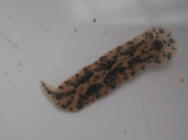
Re: Nudibranch ID: Hypselodoris spp. - 4/20/12
Hi Lynn
<Hi Si>
Thanks so much for the speedy response and especially the links.
<You’re most welcome.>
We have come to the conclusion that it is definitely Hypselodoris infucata.
<Yay, we have a winner!>
It is exactly like the attached image. Although it is very small so
most likely to be a juvenile. What is their diet as I've been led to believe
they feed on sponges
<They do indeed. Their preferred prey is reported to be the species
Dysidea fragilis.>
(Is it reef safe)
<Depends on your definition, but everything should be safe except for the
sponges.>
...and also what is the likelihood of it surviving in an aquarium?
<Unfortunately, not much (long term), unless the sponge variety that it
feeds on is plentiful, or able to regenerate itself faster than it can be
consumed. Right now, it sounds like the little Nudi is fairly small so
there may be enough food around to sustain it. As it grows, however,
things get a bit dicey. This species reportedly gets up to about 55mm,
or around 2” in length, so as its size increases, so will its appetite.
More than likely, you’ll see the Nudi wandering around for a while then it
will simply disappear.>
Thanks again
<It was a pleasure, Si.>
Si
<Take care, Lynn Z>
|
|
Mystery Invert 2/19/12
Hello WWM Crew,
<Fawn>
I am sending you four jpegs of what I believe is some sort of
Nudibranch.
<Yes>
I don't know if it's a Nudibranch or a slug.
<All Nudibranchs are sea slugs, but not vice versa. This is a
member of the genus Phyllodesmium>
It was under a large hairy mushroom and I thought is was some
sort of tube anemone. I lifted up the mushroom to get a better
look at it, and some of the "cerata" (hope that's
correct venacular),
<Yes>
came off the body. I used my high tech turkey baster and removed
it from the live rock. More of the cerata came off.
The cerata are kind of flat, and moved back and forth after they
detached from the body. I thought they may have been flukes or
some sort of salt water leech. I wasn't sure it was a
Nudibranch until after I watched and saw that it had a distinct
body and oral tentacles. Anyway, I have removed it from my
aquarium because I don't know what it is and it appeared to
be snacking on my mushroom.
<Could be. May need to be removed>
I really enjoy finding things in my aquarium, especially things
I've never seen before. I also took a video of it. I searched
WWM and the Internet for information and pictures of organisms
similar to this Nudibranch. I realize you are inundated with
requests for identifying organisms so any information you could
provide would be appreciated.
Best Regards,
Fawn
<And you, Bob Fenner>
|
|

|
|
Re: Need help with id
11/21/11
Sorry about that, I was doing a Google image search. Here is a
picture of the Nudibranchs in question.
<Neat! Looks like a member of the Eubranchidae, genus
Eubranchus... and a great mimic of the green algae Neomeris
(annulata)!>
There are two references on the page, and the information
contained isn't helping. The two are Nudibranch 8/16/07
Nudibranch, Sea Cucumber or Sea Slug? Aeolid Nudibranch
6/18/07
<Is this a close enough guess for you? Need to remove of
course if it is doing too much (predatory) damage. Cheers, Bob
Fenner>
|
|
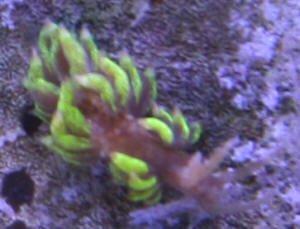
|
Re: Need help with id 11/22/11
What do you mean by predatory damage?
<? What this species of naked gill slug eats, chews on>
What is it that they eat or do?
Is it reef safe?
<? Why are you writing instead of reading where you were
referred to? B>
Re: Need help with id 11/22/11
Oops!
Didn't paste a referral. See here:
http://www.wetwebmedia.com/nudicompfaqs.htm
and the linked files above. B
Re: More Re: Need help with id, Nudibranch
11/22/11
I am sorry, but after 7 hours of reading and trying to figure out
what this is, I have no idea. I looked at the species you
mentioned and there is nothing that looks like it. Can you just
tell me if it is good or bad?
<... likely "bad" as in what is this animal eating
here? I would remove it if it is obviously doing too much damage.
B>
|
|
Nudibranch, ID 11/11/11
Can you identify this type of Nudibranch for me? I have not been
able to find it myself. Also, is it safe for my reef tank? I have
only seen it twice, just on the glass.
<Mmm, no... this image is too blurry, poorly resolved. Need a
clear image of the dorsal surface>
Thanks
Tom
<It may not be harmful; you'll have to keep an eye on what
it may be feeding on. Read here:
http://wetwebmedia.com/nudicompfaqs.htm
and the linked files above. Bob Fenner>
|
|
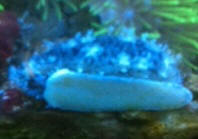
|
|
Nudibranch Identification 10/20/11
Hello WWM Crew!
<Hello Jessica>
First let me thank you for your invaluable service. I have found
the answers to virtually all of my reef aquarium questions (and
they are plentiful!) on your site, and have you to thank for my
thriving Nano mixed reef. On to the question. I recently had my
LFS order me a lettuce slug.
Expecting to see an Elysia crispata, I was surprised when this
creature was in the bag. I called the LFS and had them check
their manifest, and he was listed as an Elysia sp., but I
don't believe it. I believe it is a Nudibranch rather than a
slug, but after much searching on SeaSlugForum, I have not been
able to identify this guy. He is about 2 inches long, and I fear
that he is not the harmless herbivore that I was hoping for. I
know many of these guys have specialized diets, so I fear for his
survival as well as that of my tank if he is toxic. He is
currently in quarantine until I figure out what he is. Your
assistance is greatly appreciated!
<Since there are a gazillion species of Nudis, I suggest going
here to find a match.
http://www.nudipixel.net/pictures/
I just do not have the time to go through all these.
Bob may have seen in the wild and/or may know and will input here
if so.>
Thanks!
<You're welcome. James (Salty Dog)>
Jessica
|
|
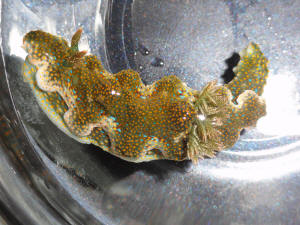
|
|
Re Nudibranch Identification 10/20/11-
10/21/22
James,
<Jessica>
Thank you for the link.
<You're welcome.>
I was able to determine that this guy is a Ceratosoma
sinuatum, a sponge-eating species of Nudibranch with no chance of
survival in my tank.
I immediately found two other references to this Nudi being sold,
as mine was, as an Elysia crispata, or lettuce slug, so I thought
it might be a service to other perplexed readers to post the ID.
The distinguishing features are the white speckles both on the
"antennae" and the feathery gill cluster on his back,
the three "humps" on his back, the tallest being
nearest to the gills, and the broad lobes edging the mantle. They
come in many color variations, but usually have a green
background with yellow and blue speckles. At least one person
reported a distressed one oozing a white discharge, so I have
some concern about toxicity. Hopefully this helps someone else
out, although it would be better if no more of these poor
creatures are mis-collected!
<Thank you for this follow up, Jessica.>
Thanks again,
<You're welcome. James (Salty Dog)>
Jessica
|
|
Nudibranch? -- 02/04/11
Hey guys! As always, you guys rock!
<And roll!>
I need some help identifying a Nudibranch/worm/slug... I've
never seen this one before. Any ideas?
<Looks to be an Aphroditid: http://en.wikipedia.org/wiki/Sea_mouse>
Thanks-a-million!
--
John Patten
Tampa Reef Marine Management Services, LLC
<Welcome! Bob Fenner>
|
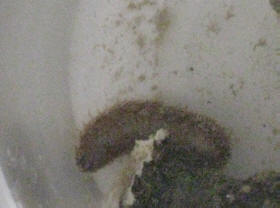 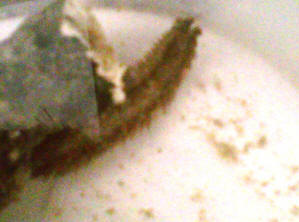 |
Re: Nudibranch? --
02/04/11
Should I discard it? I found it in a Nano reef.
Thanks again!
<... depends on what you have, what you're trying to do w/
"it"... See the Net re the life habits of this Errantiate
Polychaete family. B><<Don't tell John... but mainly
this family consumes other worms... Nereids principally,
Shhhh>> |
ID Please: Nudibranch, Possibly Melibe
viridis -- 8/5/10
Dear WWM Crew,
<Hello James, Lynn here today.>
I received this as a freebie from my LFS in Nagasaki, Japan. I have
no idea what it is and was wondering if you might shed some
light.
<What you have is a neat little Nudibranch in the genus Melibe,
family Tethydidae. Without knowing where it originated, I can only
give you a best guess as to species. It looks most like Melibe
viridis, a potentially large (up to 12cm/4.72' long) species
with a taste for crustaceans. For more information/photos, please
see the following link:
http://www.seaslugforum.net/showall/meliviri >
It is 8 cm long. I've attached a picture as it looks like
something you'd find under a microscope.
<Great photo!>
Whatever it is, I'm not letting it near my H. kelloggi until I
know it's safe.
<Well, personally, I wouldn't add this to a seahorse tank.
Although Melibe viridis is a crawler that mainly eats crustaceans,
it can get fairly large. I'm not sure how large your H.
kelloggi individual is but I wouldn't exclude the possibility
of the Nudibranch coming across it while it's resting,
trapping, and ingesting it.>
Regards,
James Miller
Okayama, Japan
<Take care, Lynn Z. > |
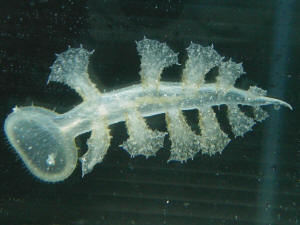 |
Mysterious Creature 8/5/10
Hello Lynn, hello Bob,
There's a great mysterious creature question in the marine
inbox. I have NO idea at all what it is. Can't wait to hear
what you think.
Cheers, Neale
Re: Mysterious Creature
Thanks Neale,
I've seen one of these odd-looking creatures before.
It's a Nudibranch in the genus Melibe,
possibly Melibe minuta - http://www.seaslugforum.net/meliminu.htm
I just woke up, so as soon as I get some coffee in me,
I'll get the query written and sent on its way.
Take care and thanks again,
-Lynn The ones I've seen in N.E. Sulawesi, suck
up/vacuum muck... will attach pix. B
Yikes! What I still have a hard time grasping is
how it can consume sizable crabs without getting
nipped into letting go, or shredded. That oral
"veil" must be a lot tougher than it
looks.
-Lynn
Some are outright surprisingly LARGE! Have
"come across" species, specimens over a
foot in length. B Wow, how neat is that?
Great shots, Bob!
-Lynn Mmm, well, wrong lens... 105
mm... and too short a focal depth/width...
<Well, I guess that just shows how much I
know...or don't know! I thought they
looked great. It's just such a
neat-looking creature. It looks like a
miniature version of some space monster from
the original Star Trek series.  >
but neat animal.
<Definitely!>
It had some commensal Hippolytid
shrimps "riding shotgun" on
it, neat as sunshine. B
<Oh wow, that is neat. I guess they
fed on whatever was stirred
up/dislodged as the Nudi foraged? See,
this is why I love ID work so much.
I'm not able to see all the neat
things you regularly observe in person
while diving, but this way I still get
to "discover", albeit
vicariously, some unbelievably neat
creatures. Thanks for sharing your
photos..take care, Lynn>
<Welcome Lynn. B>
|
|
Sea Slug ID: Likely Tritoniid Nudibranch -
5/23/10
Hi Bob, et al,
<Hello Nick, Lynn here tonight.>
Had a problem with one of my corals recently,
<Uh-oh>
..lifted it up to take some photos and found these two slugs
below
<Not good>
(Please excuse the Aiptasia, that's another headache).
<Yep, they definitely can be a headache!>
I believe they are the culprits for the nasty damage to the
coral, coming out to eat it at night.
<If the damage was done to soft corals, you'd be right.
What you have looks very much like a couple of Nudibranchs in the
family Tritoniidae (Suborder: Dendronotina). Nudi's in this
family prey on soft corals, hydroids, sea pens, and Gorgonians.
I'd recommend removing any and all individuals (as well as
any egg masses) with something like a turkey baster. Quarantining
the corals would be a good idea, if possible. If not, keep
checking the corals (especially at night) and remove every Nudi
you see. Please see the following link for an example of a common
tropical specie: http://www.seaslugforum.net/showall/triteleg
>
Are you able to help with identification, and confirm they would
be eating it?
<Well, it would help to know what kind of corals were being
preyed upon, but since those look like Tritoniids, I'm
guessing they're softies. For more photos of species in this
family, please see the following link. Tritoniidae starts about
3/4 way down the page. Each species is a link to an information
page with photos. http://www.seaslugforum.net/specieslist.cfm
>
I've tried www.nudipixel.net but can't seem to find a
match.
<There are an awful lot of Nudibranchs out there!>
Many thanks for your help.
<You're very welcome.>
Regards
<Take care.>
Nick
<Lynn Z>
|
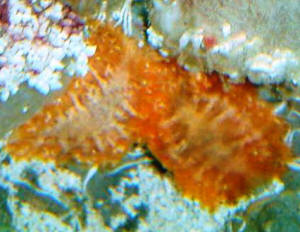 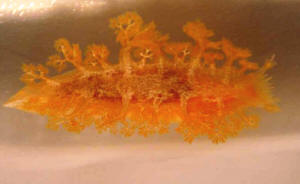 |
|
Re: Sea Slug ID: Likely Tritoniid Nudibranch, now
Nephtheid - 5/24/10
Hi Lynn,
<Hi Nick!>
Thank you so much (I must also say WWM is brilliant)
<You're very welcome and thank you!>
It is indeed a soft coral, and the only coral I currently have -
I can't remember its name now, could it be a Nephthea?
<Well, coral ID's aren't exactly my forte, but that
does indeed look like something in the family Nephtheidae (order:
Alcyonacea). Unfortunately, Tritoniids love to eat
Alcyonaceans.>
There are some photos attached if that helps.
<It certainly does, thank you.>
I wasn't sure I was able to keep corals alive in my tank, now
it looks like they might have just been eating them.
<Likely so>
I think you are right, it may have been the white vs. orange that
made me miss the pictures.
<I can certainly understand. That particular species varies
from white, to orange to a reddish orange but if you don't
know that, you can easily dismiss it as a candidate. I've
done the same thing myself a time or twenty!>
On closer inspection, it indeed looks like they have laid eggs
all over the base of the coral,
<Yikes! I'd hoped that wasn't what I was seeing in one
of the previous photos.>
I thought about using a freshwater dip, but I believe I read on
your site that the freshwater dip could kill the coral,
<Yep, corals do not like freshwater dips.>
..so will probably go with gently scrubbing them off in a bucket
of tank water.
<Sounds good. Definitely get rid of those eggs and keep an eye
out for more Nudi's.>
Regards
<Take care>
Nick
<Lynn Z>
|
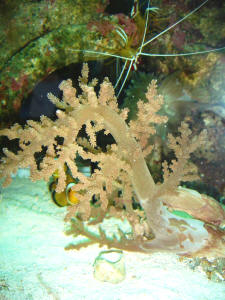 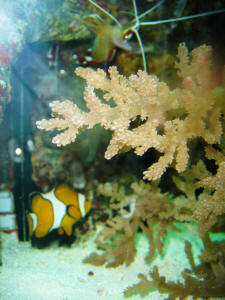 |
|
Identify 4/3/10
Was hoping you might be able to help identify the little critter
pictured
here. My nephew caught it in a bucket on Miami Beach. Thanks
Mario Barroso
<Is Glaucus..., an Aeolid Nudibranch; likely
G. atlanticus:
http://en.wikipedia.org/wiki/Glaucus_atlanticus
Bob Fenner>
|
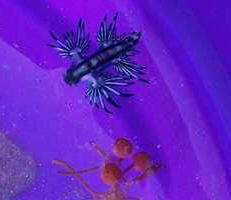 |
|
Help With A Slug ID? Likely Dendrodoris nigra or
fumata - 3/12/10
Hi WWM crew!
<Hi Adam, Lynn here today!>
I'm hoping you can help me with an ID on something that has
apparently hitchhiked its way in to my 90g reef tank.
<Surprise!>
I will attach the two best pictures I have of it in this e-mail.
I have to apologize for the iPhone photo quality but wouldn't
it be my luck that when something cool and unexpected appeared,
my big camera was sitting on my desk at work.
<Murphy's Law strikes again!>
It was about 1.5 inches long, half an inch across and looked very
much like a slug with a ruffled skirt of tissue all the way
around its body. It has two antennae
<'Rhinopohores'>
..and what looks like..a wilted flower the part of its body that
I assume is its anus or maybe gills.
<Gills>
The pictures make it look black, but under the halide lights of
my aquarium, it was the deepest royal blue I have ever seen on an
animal. It had two rows of tiny white dots down its back (I
played around with the gamma, white balance and exposure on these
pics in PS so you can see the dots) and white dots on the tips of
its antennae. I was a little shocked to see something that large
and delicate pop up unexpectedly in my tank which has been up and
running now for 6 months and my initial reaction after "wow
that's pretty" was concern, as I know that some sea
slugs/Nudibranchs can be quite dangerous in a reef aquarium.
<Yep, Nudibranchs in particular can be a real problem
sometimes.>
Last month something started eating the polyps on one of my
largest Acropora colonies in the night
<Uh-oh. Take a good look at the colony at night and watch for
the usual suspects: Asterina stars, other Nudibranchs, crabs,
coral-eating snails, a large Fireworm, flatworms, etc. Basically,
look for anything on or near the coral.>
..and I thought I had identified the culprit to be a small, hair
covered, mucous blowing crab that I removed,
<Heheee! That sounds like the person that sat behind me in
Avatar a couple of weeks ago! Seriously though, the crab could
well have been the culprit. Just keep an eye out for further
signs of predation, just in case.>
..but I didn't know I had something as odd as a sea slug in
my tank at the time. From the looks of its mouth parts which I
got a peek at when it pressed against the glass, it looks like an
algae eater but I've also heard that some sea slugs can be
quite toxic.
<Yes indeed. There's a Sea Hare/Aplysiid from around
Australia that's been responsible for quite a few dog deaths.
Apparently the dogs find them washed up on the beach, eat them,
and sadly, it's game over.>
I've been pouring through the sea slug forum species list at
http://www.seaslugforum.net/specieslist.cfm,
<Love this site>
..but I'm afraid in my totally naive state I don't even
know what family or Superfamily I should be looking in. Some
members of the Onchidorididae family appear to have the right
body shape, but I don't know how diagnostic that is.
<It all helps, believe me. By the way, kudos to you for even
beginning to look through that long list of species!>
Any suggestions on where I should be looking
<Yes, take a look at the Nudibranch species Dendrodoris nigra
and Dendrodoris fumata (Suborder: Doridina, Family:
Dendrodorididae). They're common, tropical Nudibranchs from
the Indo-West Pacific that feed exclusively on sponges and are
often mistaken for each other. Both have white-tipped rhinophores
and are mostly black as adults although they can appear bluish
under certain lighting. For more information on these two
beauties, please see the following links, starting with the FAQ
titled 'Flatworm Identification: Actually, A Nudibranch:
Dendrodoris nigra or fumata -- 2/17/10' here:
http://www.wetwebmedia.com/nudicompfaqs.htm
Dendrodoris nigra:
http://www.seaslugforum.net/showall/dendnigr
Dendrodoris fumata: http://www.seaslugforum.net/showall/dendfuma
>
..or if this is dangerous?
<It is to your resident sponges. Other than that, it
doesn't pose much threat to the system as a whole. The good
news is that it's a fairly small Nudi in a large volume of
water so any potential toxins released upon death should have
negligible impact.>
I would prefer to not remove it as it's quite beautiful,
<It is indeed.>
..but considering how long it took to find it (and believe me I
spend more time than I should staring in to my tank)
<Me too!>
..I don't even know if I'll ever see it again.
<You might not. It happens that way sometimes.>
Thanks again for your invaluable assistance,
<You're most welcome.>
Adam LeClair
<Take care, Lynn Zurik>
|
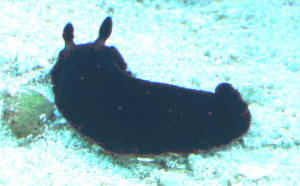 |
Nudibranch ID Link -- 02/08/10
Hi Guys/gals,
FWIW, I came across this site today and found it pretty interesting,
especially with over 22,000 Nudibranch photos.
http://www.nudipixel.net/
Cheers,
James
<More Nudi/es than many porn sites! B>
|
Nudibranch Photos to Share: Likely Tritoniid --
11/28/09
Hello.
<Hello Lianne, Lynn here today.>
You are always sharing with us, thought you might enjoy these
photos.
<Thank you!>
This Nudibranch was sold to us as a small "sea hare"
(hare, hare, hare),
<Heeeee! Although it does bear a superficial resemblance to
the Blue-Ring Sea Hare (Stylocheilus striatus), that's not
what it is. Your little critter looks like a Nudibranch in the
suborder Dendronotina, family Tritoniidae. These creatures eat
soft corals, gorgonians, sea pens and possibly hydroids, have
distinctive 'pulpit' shaped rhinophores (sensory
tentacles on the head), as well as a number of branched
cerata/outgrowths that run the length of the body on either side.
They also have what's called an 'oral veil', a
multi-branched digitate flap that overhangs the mouth and can be
seen in your photos. This is used to detect/locate open polyps.
Unfortunately, I can't tell you what specie this is, but
apparently the blue spots I see on your individual are fairly
common in many of the Indo-West Pacific varieties. If you'd
like to pursue this ID further, please see the following link for
a list of species in the above-mentioned family (each is a link
with more information/photos). Be sure to note the degree of
color variation within each specie:
http://www.seaslugforum.net/specieslist.cfm
Stylocheilus striatus/Blue-Ring Sea Hare for comparison (note
difference in rhinophore shape, cerata shape/placement, etc.):
http://www.seaslugforum.net/showall/stylstri
>
..and has shown a love of star polyp fronds (munch, munch,
munch). He only loves the flower, of course.
<Oh yes, Tritoniids love open polyps!>
Wondering if we could possibly meet his coral needs.
<That could get expensive!>
He is a big fellow, about 3 inches long.
<That's unusually large for a Tritoniid, but maybe the
animal's 3' all stretched out!>
At least it would be less expensive than feeding him Dendros!
<Heeee! It's undoubtedly a terrific and beautiful little
Nudi, but unless you have a very large population of expendable
polyps, I'd think about returning it for a credit/exchange.
By the way, thanks again for sharing the photos!>
Cheers,
Lianne
<Take care, LynnZ>
|
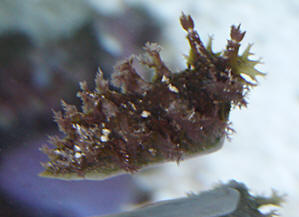  |
|
FAQs about Nudibranch
Identification 7
Related Articles: Nudibranchs, Sea Slugs,
Related FAQs: Nudi ID 1, Nudi ID
2, Nudi ID 3, Nudibranch ID 4, Nudibranch ID 5, Nudibranch ID 6, & Nudibranchs 1, Nudibranchs 2, Berghia Nudibranchs, Nudibranch Behavior, Nudibranch Compatibility, Nudibranch Selection, Nudibranch Systems, Nudibranch Feeding, Nudibranch Disease, Nudibranch Reproduction, & Sea Slugs, Marine
Snails 1, Marine Snails 2,
Marine Snails 3,
|

|
|
|

